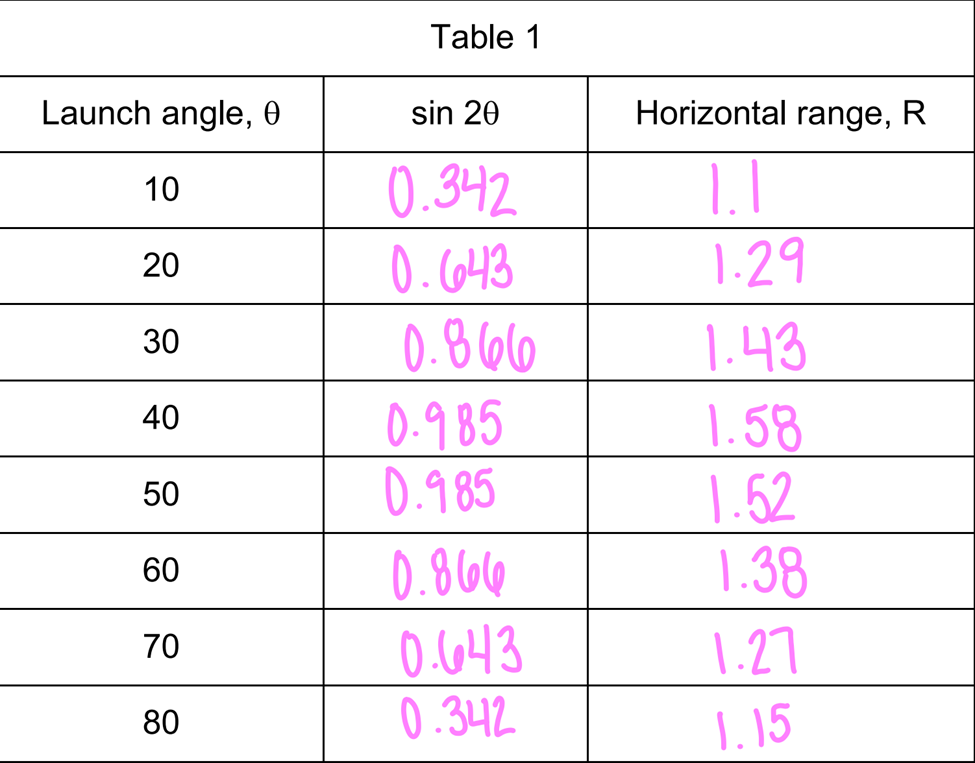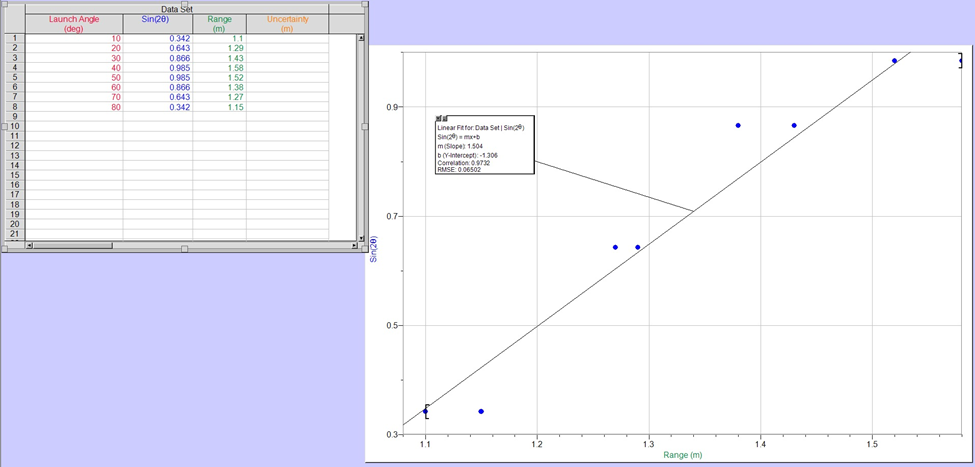Question
1.To determine the launch speed, vo, in the first experiment, your only data are the values of x and y, and an assumed value for
1.To determine the launch speed, vo, in the first experiment, your only data are the values of x and y, and an assumed value for g of 9.81 m/s2 . Here are some hints on how to obtain an expression for vo: What is the ball's initial vertical component of velocity? Can you use this velocity component, together with y, to obtain the time of flight, t? Does the horizontal component of velocity change from its initial value, vo? Can you combine it with t to get x?
2. Once you have obtained an expression for vo, check with your instructor that it is correct, then use your values of y and the average value of x to obtain a numerical value.
3. in order to determine the launch speed, vo, in the second experiment, your only data are the values of the horizontal range, R, for different launch angles, q, and an assumed value for g of 9.81 m/s2 . Here are some hints on how to obtain an expression for vo: Can you obtain an expression for the time of flight, t, based on the initial vertical component of velocity, vosinq, and the initial and final y coordinates? Doees the horizontal component of velocity change from its initial value, vocosq? Can you combine it with t to get R?
4. Once you have obtained an expression for R, check with your instructor that it is correct.
5. Open the file "Range vs. Launch Angle" from folder lab 03. Use the error bar option which can be accessed from DATA>Column Options>Range(m). Check 'Error Bar Calculations' then select 'Use Column' for Uncertainty in Range (m). NOTE When printing graphs, save the trees by selecting only the pages that you really want to print.
6. From the slope and your assumed value of g, calculate an average value of vo.
7. How do your two values of vo compare? Which do you trust as the more precise measurement? Why?


Launch angle, 0 sin 20 Table 1 Horizontal range, R 10 0.342 1.1 20 0.643 1.29 30 0.866 1.43 40 0.985 1.58 50 0.985 1.52 60 0.866 1.38 70 0.643 1.27 80 0.342 115
Step by Step Solution
There are 3 Steps involved in it
Step: 1
Solutions Step 1 Given g981ms 2 1 The initial vertical component of the velocity is VyV0sin The ...
Get Instant Access to Expert-Tailored Solutions
See step-by-step solutions with expert insights and AI powered tools for academic success
Step: 2

Step: 3

Ace Your Homework with AI
Get the answers you need in no time with our AI-driven, step-by-step assistance
Get Started


